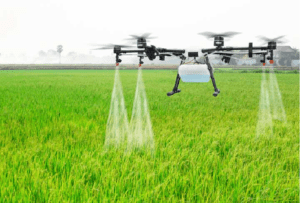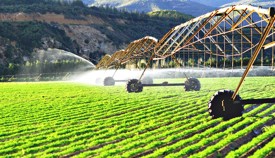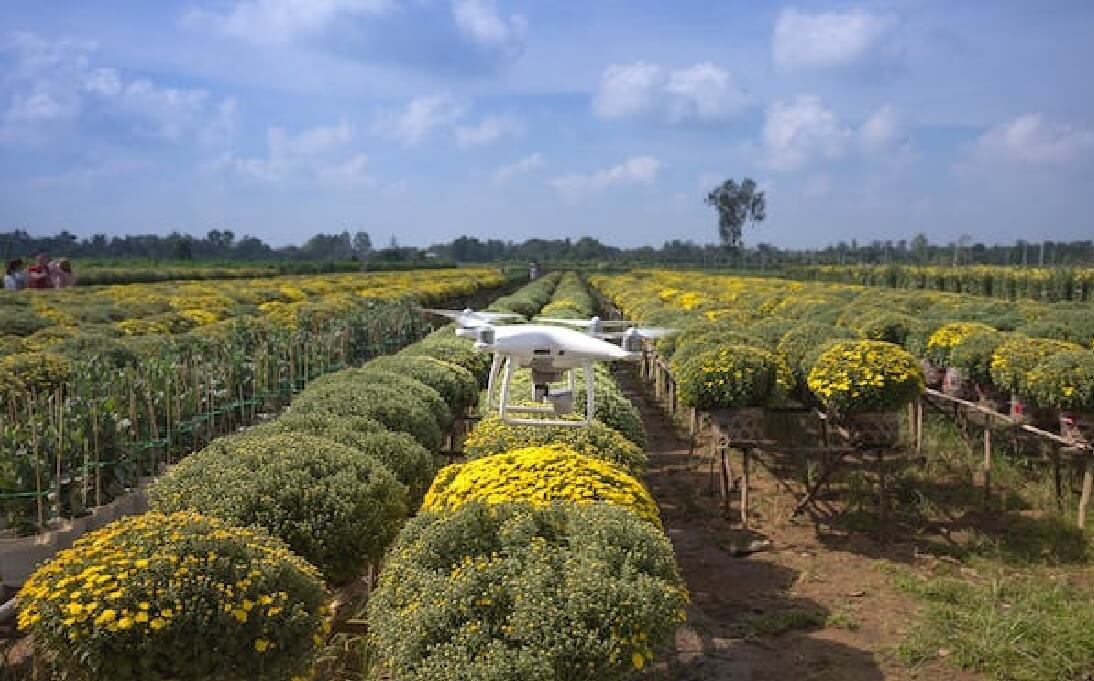
A. Water Scarcity
Both economically and environmentally, water shortage is becoming a more urgent problem. It is imperative to explore and implement green technologies for water conservation in agriculture to ensure sustainable water resources for rural and urban areas.
For agriculture to guarantee sustainable water resources for both rural and urban areas, green technologies for water conservation must be investigated and put into practice.
Water stress is increasing, especially in places like the American Southwest where estimates by 2030 show previously unheard-of levels of water stress. Ninety percent of water used in the U.S. West goes to agriculture.
Already, states like Arizona, Colorado, and California are struggling to manage the Colorado River’s dwindling water supplies.
Although nations like Israel have effectively desalinated Mediterranean seawater to produce usable freshwater, the United States has not yet fully embraced this technique. Water conservation remains, thus, the best way to deal with water stress in agriculture.
With over 40 American states projecting water shortages by 2024, the U.S. Environmental Protection Agency (EPA) has made clear how urgent water conservation is.
B. Impacting Water Conservation
State-by-state variations in water conservation laws are striking and cover everything from plumbing requirements to drought contingency plans. Just 11 states—California leading the pack—were rated A or B for both conservation and climate resilience in a 2017 Water Efficiency and Conservation State Scorecard.
The following laws are about to have an effect on agricultural water conservation:
1. Sustainable Groundwater Management Act (SGMA):
2014 saw the passage of SGMA by California, the final state to control groundwater. Local Groundwater Sustainability Agencies (GSAs) are given the authority under this law to manage groundwater use in their own basins.
Farmers will especially need to measure and, in many cases, restrict the amount of groundwater they use for irrigation, hence, SGMA is very significant to them. Groundwater Sustainability Plans (GSPs) adoption in 2020 and 2022 is probably going to result in major changes in conservation methods and the development of smart water markets to enable groundwater trading.
2. Colorado River Compact:
Signed originally in 1922, this compact controls the distribution of water resources in the Colorado River basin. Preempting federal government-mandated limitations, the seven impacted states have agreed to voluntary reduction with water levels in Lake Mead and Lake Powell at historic lows.
This is really a stopgap, though, and by 2026, a new deal needs to be agreed. The region’s agricultural future is yet unknown; Arizona, for instance, has set aside $9 million to assist Pinal County farmers who will need to drill new groundwater wells.
C. Why green technologies in agriculture?
Because they lessen environmental damage, generate fewer byproducts of fossil fuels, and support sustainable agricultural development, green technologies are becoming more and more significant in agriculture.
Green technology in agriculture refers to the use of sustainable practices and technologies to improve crop yields, reduce environmental impact, and promote long-term agricultural sustainability.
There are several reasons why green technologies are crucial in modern agriculture:
1. Benefits to the Environment:
Green technologies reduce the negative environmental impacts of traditional farming methods.They reduce the usage of toxic pesticides and fertilizers, improve soil health, and clean up water. Biodiversity and ecosystems are thus better protected.
2. Resource efficiency
This is a major emphasis of green farming methods. Drip irrigation is one of the ways they help save water. They also cut energy use and maximize land use. Agricultural activities are guaranteed to be more economical and sustainable by these methods.
3. Climate Change:
Carbon sequestration in the soil is one way that green agriculture helps to slow down climate change. Reduced tillage and cover cropping, for example, help to trap and store carbon dioxide, which lowers greenhouse gas emissions.
4. Higher crop yields:
Several green technologies are intended to raise crop yields, including genetically modified crops and precision agriculture. With the world population still rising, this is essential to guaranteeing food security.
5. Economic viability:
Higher profitability and output in agriculture are frequently the results of green technologies. They lower input costs, strengthen crop tolerance to pests and climate change, and improve farming’s general economic viability.
D. The urgent necessity to give green technology in agriculture top priority
Agriculture has significantly worsened environmental degradation. Massive volumes of fossil fuels are released into the atmosphere during the very carbon-intensive processes of food production, transportation, and consumption, which speeds up global warming.
It is imperative to give green technology in agriculture top priority because of the growing population and rising living standards worldwide.
What are, therefore, the top green technologies in agriculture today?
Using renewable energy, zero tillage, biotechnology, organic agriculture, vertical farming, irrigation monitoring, integrated pest management, drones, fleet management, agricultural robots, and digital sensors, these cutting-edge methods seek to make farming more environmentally sustainable.
E. The Call for Sustainable Agricultural Technologies
Nations worldwide are implementing laws with the goal of ensuring agricultural sustainability, focusing on environmental protection and pollution monitoring. Eutrophication, deforestation, soil erosion, water pollution, and resource exploitation have all been connected to traditional farming methods. These activities have significantly worsened climate change in many countries.
Some farmers continue to use antiquated methods and equipment, such monocropping, which over time depletes soil nutrients. There are also negative environmental effects to clearing forests for agricultural use.
Particularly, the loss of forests is a serious hazard. The absorption and filtering of carbon emissions is mostly dependent on mature trees, whose disappearance contributes to atmospheric deterioration and global warming.
F. Green technologies for water conservation in agriculture:
1. Renewable Energy
Since renewable energy provides steady, ecologically benign energy, it is essential to sustainable agriculture. The release of greenhouse gases by fossil fuels accelerates climate change. Solar and wind technologies transform solar radiation into electrical energy, therefore lowering the carbon footprint in agriculture.

The most often used renewable energy sources in agriculture are listed here.
Solar technology finds use in agriculture in a number of ways. Its mechanism is the conversion of solar energy into electrical energy. Farmers may run lights, water pumps and other farm machinery on solar energy.
The environmentally friendly technology that is becoming more common is solar thermal technology. By converting solar heat radiation, it produces heat energy. Common uses include water heating, underground soil heating, and solar greenhouses.
Wind: Because wind turbines take up so little room, farmers often pick them. Farmers can use them to pump irrigation water.
Grain, animal feces, and plants make up biomass. Later on, the material is burned to produce energy. Direct uses of the heat include building heating, crop drying, and dairy activities. Besides, steam and electricity can be produced with it.
Food security will rise and agriculture will become more sustainable by the use of renewable energy sources and associated technologies. Changing to an energy-secure, low-carbon future is one of the most significant changes the agricultural sector can undertake.

Zero Tillage Application (credit: In Agriculture, Environment, Farming Shankari Das)
2. Zero Tillage:
Plowing and large machinery are not necessary with zero-tillage farming, sometimes referred to as no-till farming. Zero tillage lessens soil erosion, increases soil carbon storage, and releases greenhouse gases less than conventional agricultural methods.
Additionally, this method helps the environment and reduces farmer expenses, by making use of crop leftovers from past harvests. Both economically and environmentally beneficial, zero tillage can be put into practice anywhere in the world with little financial outlay.
3. Vertical Farming
Crops grown in stacked layers transform typical horizontal agriculture in vertical farming. With this method, producers may yield more food on the same amount of land.
Moving crops indoors to reduce surface-level and atmospheric pollution, sustainable farmers are using vertical farming techniques more and more. Environmentally friendly settings also help to preserve natural areas.
Crops stacked vertically maximize use of available space, light, and water. To reduce emissions, engineers plan these buildings with energy-efficient appliances. Particularly, LED grow lights are prized for their energy efficiency.
Among the many advantages of vertical farming are higher crop yields, up to 95% less water and fertilizer use, and fewer pest and disease problems because of the regulated conditions.

Vertical farming is a viable option for local food production even if it requires more energy because it may be located in urban areas or places with little arable land.
4. Irrigation Monitoring
Ample water availability might result in lower crop yields, hence, efficient water management is essential in agriculture. However, by using wireless and remote monitoring systems, farmers can make more informed decisions about water usage and distribution.
Large farms that need to monitor vast land areas may find these tools particularly helpful in encouraging sustainable practices and water conservation. Drip irrigation technology has become popular throughout the U.S. and can help growers save water by delivering it directly to the roots of plants
5. Farming Drones:

Sustainable agriculture now depends heavily on drones. They let farmers to gather important data across large areas and track crop growth. Drones lessen the need for transit inside farms by offering remote monitoring capabilities, which eventually lowers emissions. These electrically driven drones also emit no pollutants when in use.
Drones are today essential instruments in agriculture, enhancing sustainability initiatives and advancing the battle against climate change. Precision agriculture made possible by drones reduces guesswork and boosts crop productivity.
Drones may photograph from the air and evaluate crops with their cameras and sensors. Australia’s experts are working on smart drones that can precisely distribute fertilizers and water to crops.

Among their uses are irrigation mapping, crop spraying, and animal management. As drone technology becomes more accessible and affordable, it will continue to drive innovation in farming.
6. Integrated Pest Management

Integrated Pest Management (IPM) is a long-term strategy that promotes the application of organic pest management techniques, therefore minimizing environmental hazards and ecosystem disturbance.
As productive agriculture depends on healthy crops, IPM is a crucial green technique. Through the reduction of synthetic pesticide use and the environmental impact of agriculture, IPM promotes healthier and more productive land for farmers.
7. Organic Farming
Organic farming’s environmentally friendly methods protect the environment and enhance soil and human health. Because it depends on rich soils, agricultural yield and economic competitiveness are increased.
Organic farming favors crop rotations and manure for pest, disease, and weed control, therefore reducing the need for fossil fuel-intensive fertilizers and pesticides. Using less energy, this approach greatly reduces the consequences of global warming and promotes more biodiversity.
As such, these green technologies are causing revolutionary shifts in the agricultural industry. Understanding that no solution is universal, tackling environmental issues in agriculture requires a combination of cutting-edge technologies, occasionally combined with conventional methods.
Continual study and attempts to create new technologies highlight our shared dedication to making the world more sustainable. The critical function of agriculture in sustaining humanity emphasizes the need of identifying effective methods to keep it environmentally friendly and sustainable.
G. Harnessing Technology for Compliance in Agriculture
With the advent of new regulations, farmers and investors are faced with the challenge of meeting their obligations efficiently. Embracing cutting-edge technologies can streamline data collection and ensure compliance:
8. IoT Water Sensors:
To improve energy and water conservation in their houses, a lot of homeowners have already embraced Internet of Things (IoT) technology. In a same vein, farmers can use Internet of Things technology to show that they are following the rules and stop overpumping. Furthermore, smart water sensors are equipped to track pH levels, salinity, and other elements affecting crop health.
9. Remote Sensing Technology:
Monitoring groundwater resources is not limited to well meters linked to the Internet of Things. Groundwater availability has been evaluated by using radio waves, electric currents, and satellite photos.
Regulators can get vital information from historical photos by using methods like METRIC to retroactively calculate water use. NASA-launched twin satellites have predicted substantial groundwater loss, underscoring the need for improved data to manage and protect these resources.
Moreover, the greenhouse gas emissions from farming equipment themselves contribute to air contamination. By investing in sustainable agricultural technologies, producers are addressing these problems and lowering their carbon footprint while satisfying environmentally concerned customers.
H. Revolutionizing Water Use Efficiency
The following breakthroughs and better methods will determine the future of water conservation in agriculture, independent of laws:
10. Improved Irrigation:
Conventional farming methods frequently depend on human assessments of soil properties, including temperature and humidity. Over- or under-watering results from these laborious and prone-to-mistake procedures.
Real-time, ongoing monitoring of these factors by IoT devices yields precise irrigation data. Furthermore, taken into account are weather projections, which enables farmers to maximize irrigation and cut water waste.
11. Reducing Evaporation:
A big part of water waste is evaporation, particularly when fields are left fallow for long stretches of time. Water loss can be reduced by planting wheatgrass strips to slow down the wind and using light-colored soil to reflect sunlight. Additionally contributing to water conservation are techniques like less tillage and leaving crop residue on the soil’s surface.
12. Indoor Farming:
Even if indoor farming is well-established in certain countries, such as Japan and the Netherlands, it is still a developing industry in the US. Vertical farming makes the most of available space; soil-free hydroponics reduces evaporation and improves nutrient transfer; and controlled-environment agriculture (CEA) guarantees year-round growing conditions. Innovative indoor farming operations include Square Roots, AeroFarms, and Bowery Farming.
13. Smart Tractors:
There are other uses for advanced agriculture technology than indoor farming. Manufacturers like John Deere are introducing smart tractors equipped with touch-screen displays and satellite receivers for precise tasks like watering, seed planting, and plowing.
A growing green revolution is causing a dramatic change in agriculture toward sustainability. Consumers with ecological values are creating a more sustainable market by holding farmers accountable for their environmental impact. Farmers are responding by using cutting edge green technologies to gain an advantage over their competitors.
Agricultural professionals are using cutting edge technology to improve the sustainability of agriculture. Leading the charge in creating environmentally friendly agricultural solutions, environmental engineers enable areas to achieve emission reduction goals and bring in a new age for farming.
14. Smart Sprinklers:

15. Rainwater-harvesting Systems:
Increasingly, sustainable farmers are depending on rainwater collecting devices to maximize their water resources. Using this strategy lessens the need for freshwater supplies and lessens stormwater runoff, a typical problem in agriculture.
Farmers can use filtered runoff for irrigation by gathering extra rain and snowmelt and passing it through cutting-edge purification systems, therefore preserving the planet’s finite freshwater supplies.
FAQs:
1. Which green technologies have advanced most recently for agricultural water conservation?
The newest developments are AI-driven water management technologies, real-time monitoring using IoT devices, and drought-resistant crop varieties.
2. How may farmers employ green technologies to manage water sustainably?
Green technology facilitates efficient use of water, waste reduction through intelligent irrigation, better soil moisture management, and encouragement of environmentally friendly farming methods.
3. What cutting edge technological approaches are there to lessen water waste in agriculture?
Among the cutting-edge techniques are drip irrigation, soil moisture sensors, rainwater collection systems, computerized irrigation scheduling, and farmer-only remote monitoring software.
4. Are crop yields improved by green technology that also save water?
Indeed, green technology may increase agricultural yields even with less water use by delivering water precisely, maximizing nutrient absorption, and encouraging healthy soil conditions.
5. What part do smart irrigation systems play in contemporary methods of water conservation?
To provide water effectively, reducing waste and increasing agricultural yield, smart irrigation systems track soil moisture levels, weather forecasts, and plant water requirements.
6. How may sensors for soil moisture help farms manage water more effectively?
By monitoring soil moisture content, soil moisture sensors enable farmers to water only when needed, avoiding overwatering and waterlogging and so conserving water.
7. What advantages can water conservation offer from using precision agriculture methods?
Using real-time data, precision agriculture methods maximize inputs like water, fertilizers, and pesticides, resulting in lower costs, better water efficiency, and environmental advantages.
8. Are there any government initiatives or subsidies to encourage the use of environmentally friendly technologies in agriculture?
To entice farmers to use green technologies for sustainable agriculture methods, several governments do, in fact, provide subsidies, grants, tax breaks, and educational initiatives.
9. How can conventional approaches to water conservation stand up against green technologies?
Because they use automation, data-driven techniques, and resource-efficient procedures to save water while preserving or increasing productivity, green technologies beat conventional methods.
10. What obstacles must green technology for water conservation in agriculture overcome?
The costs of the initial investment, technical expertise, infrastructure constraints, and the requirement for ongoing monitoring and condition adaptability are among the difficulties.
11. Exist any success stories of farms saving a lot of water by employing green technologies?
Indeed, a great number of farms all around the world have used green technology like drip irrigation, precision farming, and water recycling systems to successfully lower water use and increase output.
12. In what ways is green technology for agricultural water conservation related to renewable energy sources?
Solar power is one of the renewable energy sources that may power energy-efficient irrigation systems, sensors, and pumps, therefore lowering dependency on fossil fuels and encouraging sustainable water management.
13. In what ways can green technologies transform farming’s usage of water in the future?
By combining AI, robots, blockchain, and precision farming for resilient and sustainable agriculture methods, green technologies have enormous potential to transform the usage of water.
14. Could using green technologies to conserve water help small-scale farmers?
Indeed, small-scale farmers can gain from lower water bills, higher crop yields, access to new markets via sustainable certifications, and increased resilience to the effects of climate change.
15. How do green technologies address water shortage problems for agriculture in dry areas?
By encouraging crops that are resistant to drought, effective irrigation techniques, rainfall collection, soil conservation, and water recycling techniques, green technologies tackle water scarcity.
16. What financial effects does funding environmentally friendly agricultural water conservation technologies have?
Long-term cost reductions, better resource stewardship, market competitiveness, and enhanced farm profitability can all result from investing in green technologies.
17. Exist any new developments or trends in the area of green technologies for water saving?
Trends that are only getting started include vertical farming, hydroponics, aquaponics, nanotechnology for soil moisture management, and bio-inspired sustainable agriculture solutions.
18. In what ways may farmers use green technologies and data analytics to optimize water use?
Farmers can make exact decisions for effective water management plans by using data analytics and artificial intelligence to examine weather patterns, soil conditions, crop health, and water use.
Conclusion:
This article highlights 15 green technologies for water conservation in agriculture, including precision farming, eco-friendly practices, and sustainable water management.
These technologies preserve water resources and ensure long-term farming viability. Farmers, policymakers, and stakeholders must embrace these sustainable practices to ensure a future where agriculture coexists with the environment, ensuring a steady food supply and safeguarding water resources.





Real Estate Good post! We will be linking to this particularly great post on our site. Keep up the great writing
Your article helped me a lot, is there any more related content? Thanks!